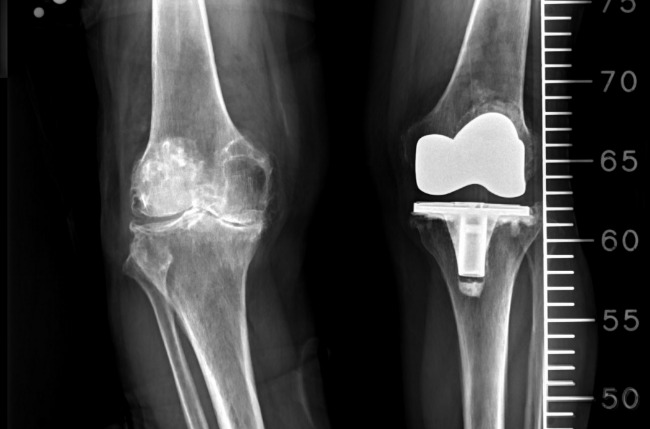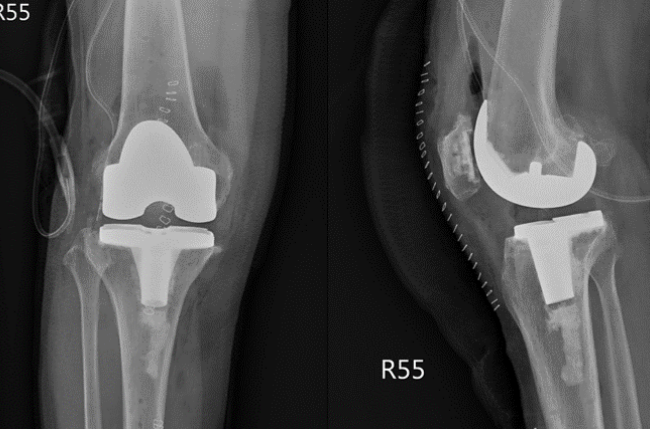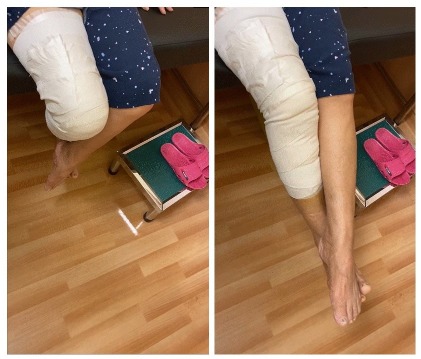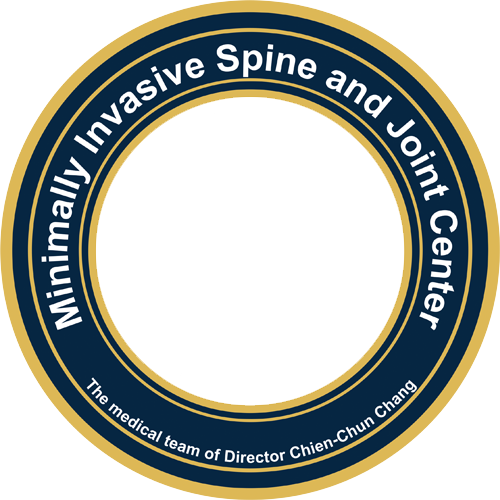85-Year-Old Woman Avoids Rehabilitation! Safe and Precise Minimally Invasive Knee Replacement with Robotic Arm Four Key Facts to Know Before Undergoing Total Knee Replacement Surgery
3D Robotic Arm-Assisted Minimally Invasive Total Knee Replacement
-

85-year-old patient with advanced right knee degeneration – Before surgery
-

85-year-old patient underwent robotic arm-assisted knee replacement – After surgery
Dr. Chang further explains that the ROSA Knee system, combined with minimally invasive techniques, offers the advantages of smaller incisions and reduced bleeding. It can also analyze soft tissue and bone conditions in real time, allowing for intraoperative adjustment of joint tightness and motion, making the implant more physiologically similar to a natural knee. As a result, patients do not require rehabilitation, can get out of bed the day after surgery, and are typically discharged within 3 to 5 days, with a significantly shortened recovery period.

One Week After Total Knee ReplacementNatural flexion reaches 120 degrees – No rehabilitation required

For the treatment of degenerative arthritis, Dr. Chien-Chun Chang recommends that patients in stages 1 and 2 first consider conservative treatments, such as medications or physical therapy. However, if the disease has progressed to stages 3 or 4, with joint deformity or severe wear in the joint space, partial or total knee replacement surgery may be necessary.The Minimally Invasive Joint Center, led by Dr. Chang, has extensive clinical experience and advanced equipment, committed to providing high-quality medical care for patients.
△Four Key Things to Know Before Total Knee Replacement △
2. Is rehabilitation required after minimally invasive robotic-assisted knee replacement surgery?When can I be discharged?With robotic arm-assisted total knee replacement, rehabilitation is not needed, and patients are usually discharged within 3 to 5 days.
3. Can I squat after receiving a knee implant?Through the ROSA Knee robotic arm-assisted total knee replacement, patients can achieve over 120 degrees of flexion postoperatively without rehabilitation, which meets most daily activity needs.Most patients are able to squat after surgery. However, squatting is a high-load, single-point pressure motion, and is not ideal for patients with degenerative knee arthritis. To protect the implant, squatting should generally be avoided.
4. Does National Health Insurance cover artificial knee implants?Patients who meet National Health Insurance (NHI) eligibility criteria are entitled to reimbursement. NHI coverage includes anesthesia, hospitalization, and surgical fees. However, some specific materials and advanced technologies may require out-of-pocket expenses.For commonly used medical materials, there are both NHI-covered and self-paid options.
The physician will recommend the most suitable materials based on the patient’s condition, but the final decision should be made by the patient.







